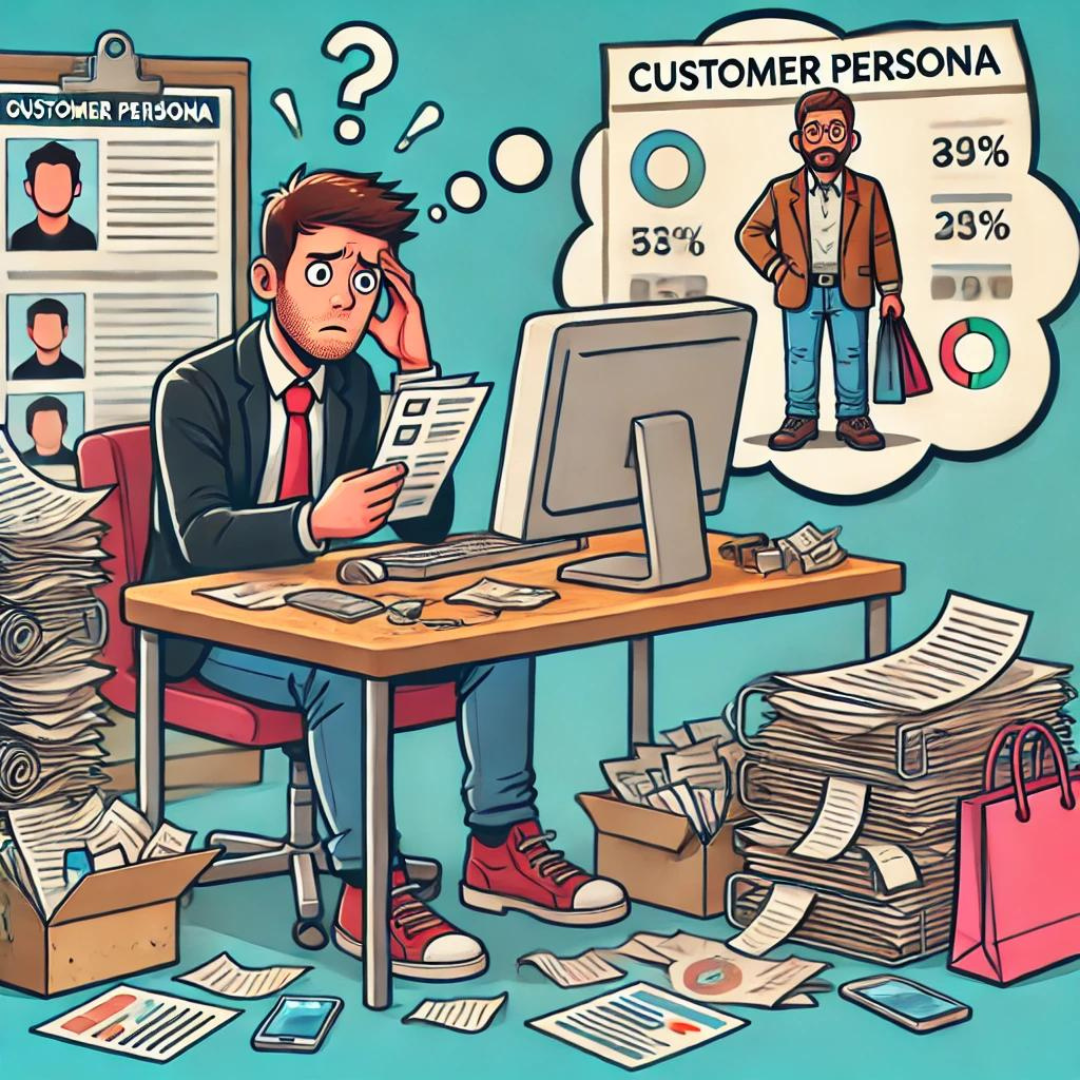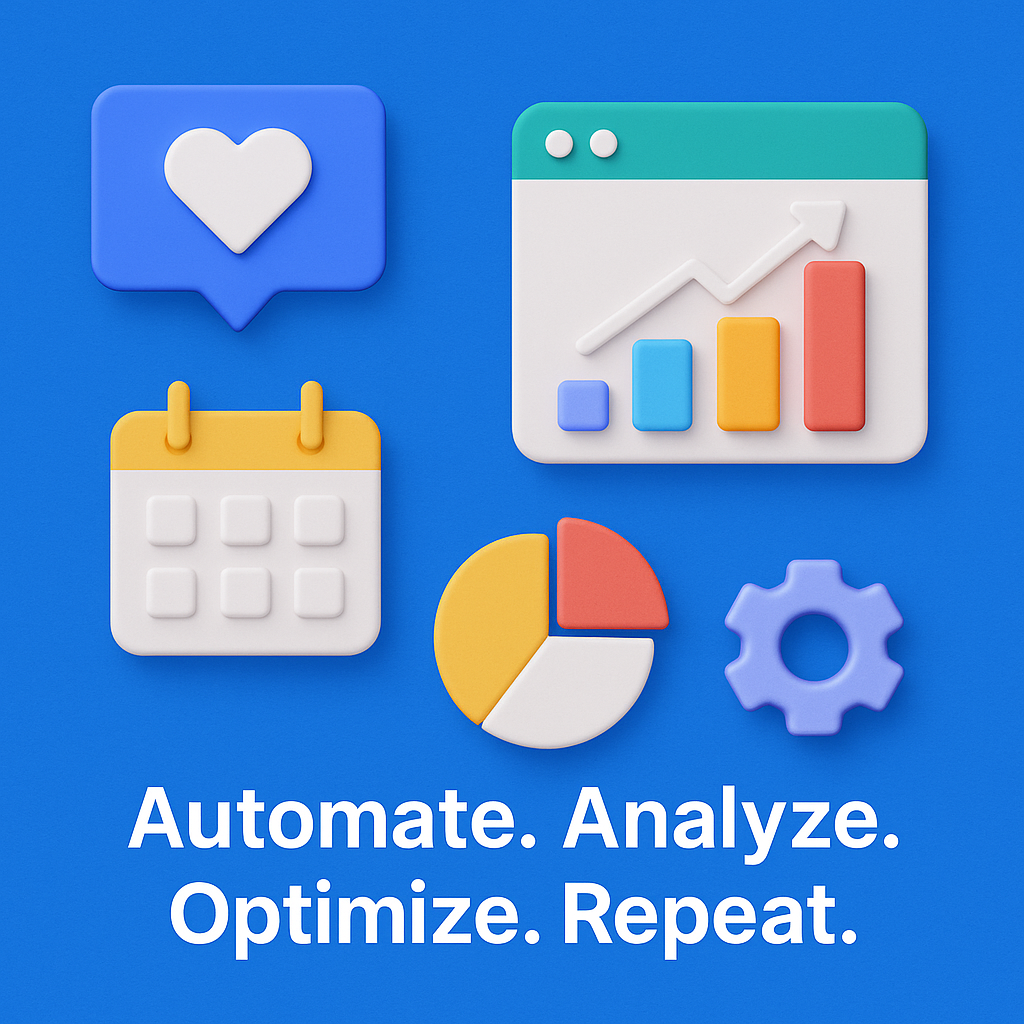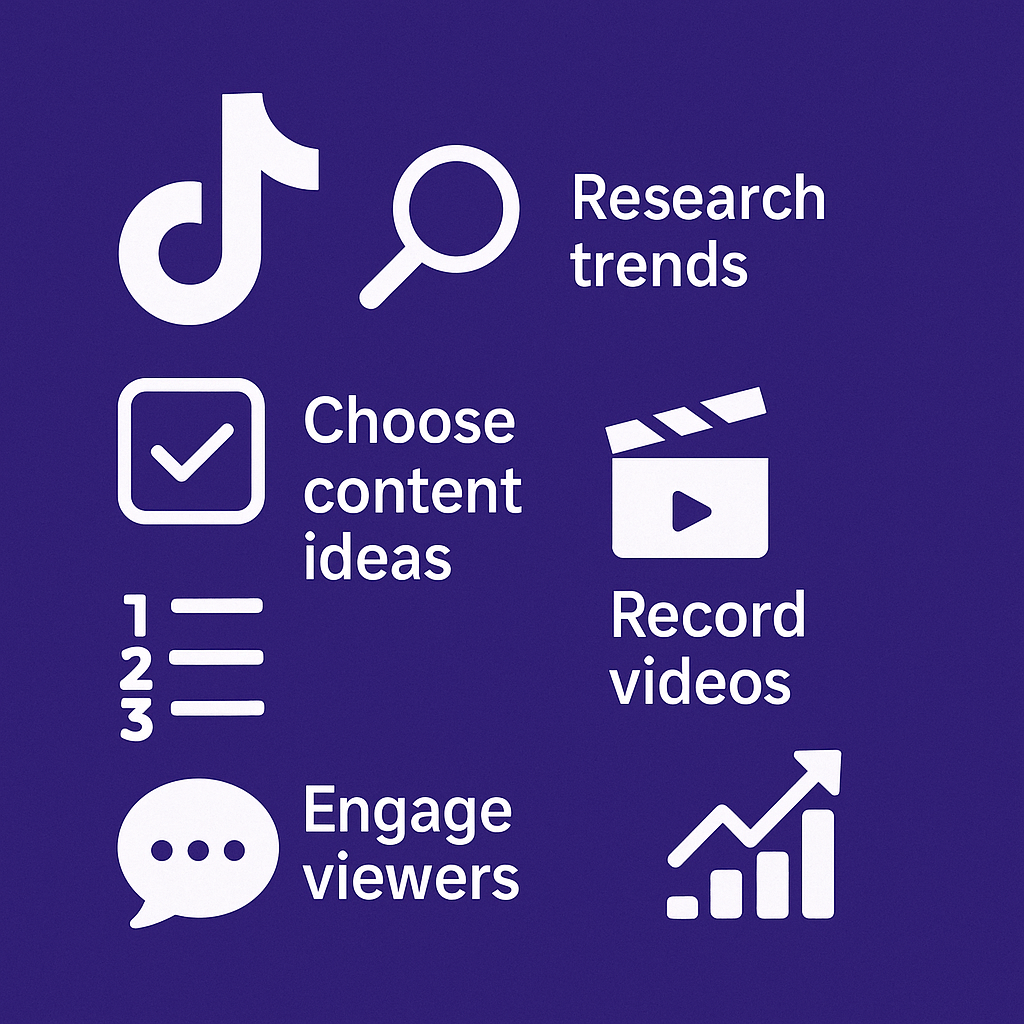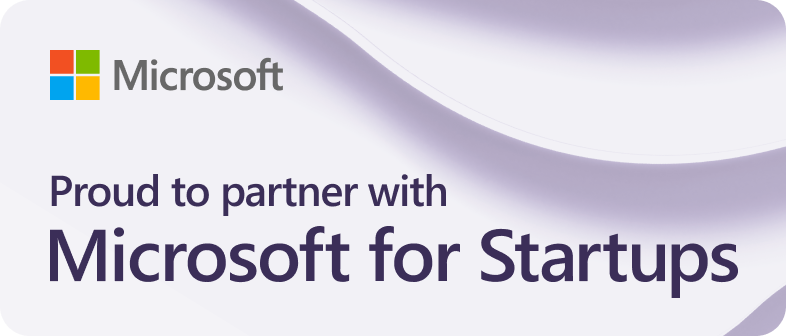Are your customer persona templates leading you in the wrong direction?
If you’re still relying on an outdated template, you might be pouring time and money into marketing strategies that are missing the mark entirely.
A customer persona is a detailed, semi-fictional representation of your ideal customer. It’s built on real data and insights about your customers’ behaviors, needs, pain points, and motivations.
Think of customer persona as a roadmap guiding your marketing efforts, helping you understand exactly who you’re speaking to and how to connect with them effectively. But just like any map, it needs to be regularly updated, or you risk getting lost.
Why does this matter?
Because your customer persona template doesn’t just affect your ads or social media posts—it influences every touchpoint in your customer journey.
From the moment someone first hears about your brand to the point of purchase (and beyond), understanding their specific needs and challenges is crucial for crafting messages that resonate, providing solutions that matter, and ultimately driving conversions.
Yet, many businesses fall into the trap of using the same old customer persona template they created years ago.
The market changes, customer behaviors shift, and new competitors emerge.
If your customer persona templates aren’t keeping up, your entire strategy could be heading in the wrong direction.
Do you struggle with managing multiple social media platforms for your brand's presence?
The Sociosight app can help you simplify the process and save you time. With Sociosight, you can publish, schedule, and monitor posts and engage with your followers across multiple social media platforms, all from one dashboard.
Get started today with a free sign-up!
Register Now for Free

In this blog post, we’ll dive into why outdated customer persona templates are hurting your business, how to spot the signs that it’s time for a refresh, and what you can do to create a more accurate and effective persona that truly reflects your audience today.
Let’s make sure you’re not navigating the competitive landscape with an obsolete map.
The Problem with Outdated Customer Persona Templates
Relying on outdated customer persona templates can have significant negative impacts on your marketing and overall business strategy.
Here’s a closer look at why this is a critical issue:
![Stop Using Outdated Customer Persona Templates! Here’s What You’re Doing Wrong [With Infographic] 1 Customer Persona Template - Sociosight.Co - Marketing Strategies](https://sociosight.co/wp-content/uploads/2024/08/Infographic-Customer-Persona-Template-410x1024.png)
Table of Contents
Static Information in a Dynamic Market
The market is constantly evolving, with new trends, technologies, and customer behaviors emerging regularly. An outdated customer persona template that relies on static information—such as basic demographics or old behavioral data—fails to capture these changes.
As a result, your marketing efforts may become disconnected from your audience’s current needs and desires.
For instance, a persona that once prioritized price sensitivity might now find quality or sustainability more important due to shifting consumer priorities. If your marketing strategy doesn’t reflect this change, your messaging will likely fall flat, leading to lower engagement and conversion rates.
Irrelevant Assumptions Leading to Misaligned Strategies
Outdated personas are often built on assumptions that were once true but are no longer relevant.
When you base your strategies on these outdated assumptions, you risk creating content and campaigns that don’t resonate with your target audience.
According to recent studies stated on the Inbound B2B Marketing site, 93% of companies that exceed lead and revenue goals actively update and segment their customer personas. On the other hand, those who stick to outdated templates are more likely to miss their targets.
So, imagine you’re marketing to a group you assume is tech-savvy because of data from years ago. However, if that audience has since become more concerned with ease of use rather than the latest tech features, your product’s appeal could be completely lost on them. This disconnect can lead to wasted resources and missed opportunities.
Missed Opportunities and Stagnant Growth
One of the biggest risks of using outdated customer personas is the missed opportunity to engage new and emerging customer segments.
Markets change, and new customer segments often arise with distinct needs and preferences. If your personas don’t reflect these new segments, you’re missing out on potential growth opportunities.
For example, if there’s a growing trend towards eco-conscious consumers within your industry and your persona doesn’t account for this shift, you’re likely missing out on a significant portion of the market that prioritizes sustainability. This is a crucial point, especially as customer-centric companies seem to be 60% more profitable than those that are not customer-centric as per a report by Inbound B2B Marketing.
Wasted Resources on the Wrong Audience
Outdated customer persona templates can lead you to target the wrong audience, resulting in wasted marketing spend and effort.
When your campaigns are aimed at a customer base that no longer aligns with your actual buyers, you end up with lower engagement, fewer conversions, and ultimately, a poor return on investment.
Data shows that companies using updated and accurate customer personas can significantly improve their marketing effectiveness, with some seeing a 2x improvement in email open rates and a 5x increase in click-through rates (as per a report by Acuitykp.com). This highlights the importance of ensuring that your customer personas are current and reflective of your actual target audience.
In summary, sticking to an outdated customer persona template can lead to ineffective marketing strategies, missed growth opportunities, and poor use of resources.
In the next section, we’ll explore how to identify the signs that your customer persona needs a refresh and what steps you can take to update it effectively.
How to Identify the Signs That Your Customer Persona Needs a Refresh
Keeping your customer personas up-to-date is crucial for ensuring that your marketing strategies remain effective and aligned with your audience’s needs.
Here are some key signs that indicate it’s time to refresh your customer personas:
![Stop Using Outdated Customer Persona Templates! Here’s What You’re Doing Wrong [With Infographic] 2 Customer Persona Template - Sociosight.Co - Marketing Strategies](https://sociosight.co/wp-content/uploads/2024/08/Infographic-Customer-Persona-Template-2-410x1024.png)
Changes in Customer Behavior
If you’ve noticed that your customers are engaging differently with your brand, this is a clear sign that your persona may need updating.
For example, if you’ve traditionally seen high engagement with email marketing but suddenly see a drop in open rates and click-through rates, it could indicate that your audience’s preferences have shifted.
Example:
Old Behavior: Your persona “Corporate Carl” was responsive to lengthy, informative email newsletters.
New Behavior: You notice that Carl is now spending more time on social media platforms like LinkedIn and prefers bite-sized, visually appealing content. This shift suggests that Carl’s attention span and preferred content consumption methods have changed, signalling it’s time to update his persona.
Declining Engagement Metrics
If your key engagement metrics, such as social media likes, shares, comments, or email open rates, are declining, this could indicate that your messaging is no longer resonating with your target audience. This might be due to an outdated persona that doesn’t reflect your audience’s current interests or behaviors.
Example:
Old Metrics: “Discount Debbie” responded well to promotional posts with heavy discount offers, resulting in high engagement.
New Observation: Recently, these discount-driven posts have seen a significant drop in engagement, and instead, posts about product quality and customer stories are performing better. This indicates that Debbie’s priorities may have shifted from price sensitivity to valuing quality and brand reputation, suggesting her persona needs a refresh.
Market or Industry Shifts
If your industry has experienced significant changes—such as new competitors entering the market, technological advancements, or shifts in consumer demand—it’s likely that your customer personas need to be updated to reflect these new realities.
Example:
Old Persona: “Brick-and-Mortar Beth” focused on in-store shopping experiences.
New Market Shift: The rapid growth of e-commerce, especially accelerated by the COVID-19 pandemic, shows that Beth’s preference has shifted to online shopping for its convenience and safety. This market shift indicates that Beth’s persona should be updated to “E-commerce Emily,” who prioritizes online convenience over in-person experiences.
Feedback from Sales and Customer Service Teams
Your sales and customer service teams are on the front lines and can provide valuable feedback about changing customer preferences and behaviors.
If they report that customers are asking new types of questions, expressing different concerns, or showing interest in different products, it’s time to revisit your personas.
Example:
Old Feedback: “Feature-Focused Frank” was always concerned about the technical specs of products.
New Feedback: Recently, sales and support teams report that Frank is more concerned with ease of use and integration with other tools, suggesting that his priorities have shifted from raw features to user experience and compatibility. This indicates that Frank’s persona needs updating to reflect these new priorities.
Outdated Data
Customer persona templates built on old data are likely to be inaccurate.
If you haven’t updated your personas in the last 12-18 months, or your data sources (like surveys or CRM data) are outdated, it’s time to refresh. Regularly auditing your personas ensures they stay relevant and effective.
Example:
Old Data: “Millennial Marketer Mary” was focused on traditional advertising methods and email campaigns.
New Data Needed: The rise of social media marketing, particularly on platforms like TikTok, has shown that Mary’s marketing strategies and content consumption habits have shifted. If your persona still reflects the old data, it’s time to update Mary to a “Digital-First Diana,” who prioritizes social media and content-driven marketing.
Steps to Update Your Customer Persona Templates Effectively
Once you’ve identified that your customer personas need a refresh, follow these steps to update them effectively:
![Stop Using Outdated Customer Persona Templates! Here’s What You’re Doing Wrong [With Infographic] 3 Customer Persona Template - Sociosight.Co - Marketing Strategies](https://sociosight.co/wp-content/uploads/2024/08/Infographic-customer-persona-template-3-410x1024.png)
Gather Fresh Data
Start by collecting new data to replace outdated information. This could include:
Surveys and Interviews:
Conduct surveys and in-depth interviews with current customers to understand their needs, pain points, and behaviors. Include questions about recent changes in their purchasing habits or what’s currently influencing their decisions.
Example:
Old Persona: “Corporate Carl” – A 45-year-old executive who values formal business attire and traditional corporate culture.
Refined Persona:
After conducting surveys and interviews, you discover that “Carl” now prefers a more casual work environment and values work-life balance over the traditional corporate culture.
This insight leads to a refined persona: “Casual Carl,” who prioritizes flexibility and modern work environments.
The new persona reflects Carl’s shift towards casual attire and interest in remote working options, based on the survey data revealing a 70% preference for these new trends among your target audience.
Analytics and CRM Data:
Review your website analytics, social media engagement insights, and CRM data to identify any new trends or shifts in customer behavior. Look for patterns in how customers are interacting with your brand, what content they engage with, and what products they’re buying.
Example:
Old Persona: “Deal-Hunting Dana” – A 30-year-old shopper who primarily responds to discount offers and frequent sales.
Refined Persona:
By analyzing recent CRM data, you notice that Dana and similar customers are engaging more with loyalty programs and value-added services rather than just discounts.
This leads to the refined persona: “Loyalty-Driven Dana,” who values rewards programs and personalized offers over simple discounts.
The CRM data showed a 50% increase in engagement with loyalty emails, indicating a shift in what motivates Dana’s purchasing decisions.
Market Research:
Stay informed about broader market trends that might affect your customers. This can include industry reports, competitor analysis, and insights into emerging consumer behaviors.
Example:
Old Persona: “Brick-and-Mortar Beth” – A 40-year-old customer who prefers in-store shopping experiences and values the ability to see and touch products before purchasing.
Refined Persona:
After conducting market research, including industry reports and competitive analysis, you discover a growing trend towards online shopping, particularly due to the convenience and wide selection offered by e-commerce platforms.
This leads to the creation of a refined persona: “E-commerce Emily,” who prefers shopping online for convenience, speed, and access to a wider range of products.
The market research highlighted that 65% of consumers in Beth’s demographic now prefer to shop online, reflecting a significant shift in consumer behavior.
Segment Your Audience
Reassess how you’ve segmented your audience. As customer needs and behaviors evolve, your segmentation strategy might need to change as well.
Create segments based on updated characteristics, such as new interests, purchasing habits, or demographic shifts.
This can help ensure that your personas accurately represent distinct groups within your audience, allowing for more targeted and effective marketing efforts.
Example:
Old Segment: “Young Professionals”
Refined Segment:
After reviewing new data, you discover that your audience has diversified, and you now have two distinct groups: “Young Professionals with a Focus on Sustainability” and “Young Professionals Driven by Career Growth.” The refined segmentation allows you to target these groups with tailored messages that resonate with their specific motivations.
Focus on Behavioral Insights
Go beyond basic demographics and dive deeper into behavioral insights.
Understanding the motivations, challenges, and decision-making processes of your customers is key to creating personas that resonate.
his might include:
- Pain Points: Identify current problems your customers are facing and how your product or service can solve them.
- Buying Triggers: Determine what events or needs are most likely to lead customers to purchase.
- Preferred Channels: Understand where your customers prefer to engage—whether it’s through social media, email, or other channels.
Example:
Old Persona: “Discount Debbie” – A persona focused solely on price.
Refined Persona: “Eco-Conscious Ella”
After analyzing behavioral insights, you find that Ella is willing to pay more for products that are sustainable and ethically sourced. This shift is reflected in her refined persona, which highlights her preference for brands that align with her values rather than just offering the lowest price.
Update and Revise Your Persona Profiles
Using the new data and insights you’ve gathered, revise your customer persona profiles.
Ensure that each persona reflects the current realities of your audience, including updated demographics, behaviors, motivations, and pain points.
Make sure your personas are not just accurate, but also actionable, meaning they should guide your marketing and sales strategies effectively.
Example:
Old Persona: “Tech Enthusiast Tom” – Interested mainly in the latest gadgets.
Refined Persona: “Practical Tech Paul”
After discovering that your audience has become more cost-conscious and interested in long-term value, “Tom” evolves into “Paul,” who prioritizes technology that offers the best value and usability over time, rather than just the newest features.
Test and Validate
Before fully integrating the updated personas into your marketing strategy, test them in a few campaigns to validate their accuracy.
Monitor the results closely to see if the updated personas lead to improved engagement, higher conversions, or better alignment with customer needs.
If necessary, tweak the personas further based on this initial feedback to ensure they are as effective as possible.
Example:
Test Persona: “Digital-First Diana”
After refining your persona to reflect a shift towards digital-first strategies, you run a pilot campaign focused on digital channels and track its performance. The campaign shows a 20% increase in digital engagement, validating that the updated persona is more aligned with your audience’s current preferences.
Regularly Audit and Refresh
Finally, make it a habit to regularly audit and refresh your customer personas.
Markets and customer behaviors can change quickly, so plan to review and update your personas at least once a year, or more frequently if there are significant changes in your industry or customer base.
By keeping your customer personas up-to-date, you ensure that your marketing strategy remains relevant, targeted, and effective in reaching the right audience with the right message.
Conclusion
Keeping your customer personas templates updated is not just a best practice—it’s essential for the success of your marketing strategy.
An outdated customer persona is like an old map, leading you down the wrong paths and causing you to miss out on valuable opportunities.
By regularly refreshing your personas with current data, behavioral insights, and a deep understanding of your audience’s evolving needs, you ensure that your marketing efforts remain relevant, targeted, and effective.
Remember, customer behavior and market dynamics are constantly changing.
What worked a year ago may not be effective today, and without accurate personas, you risk wasting resources and losing touch with your audience.
By staying proactive and revisiting your personas regularly, you can keep your strategies aligned with what truly matters to your customers.
Ready to take your customer personas to the next level? At Sociosight, we provide the tools and insights you need to keep your personas fresh and your marketing strategies on point.
Sign up for our Standard Lifetime Subscription today and gain access to comprehensive analytics, customer behavior insights, and more—ensuring that your marketing efforts are always driving results.
If you want to learn more about how Sociosight can help you better refine your customer persona template strategy, contact us for a free consultation.











